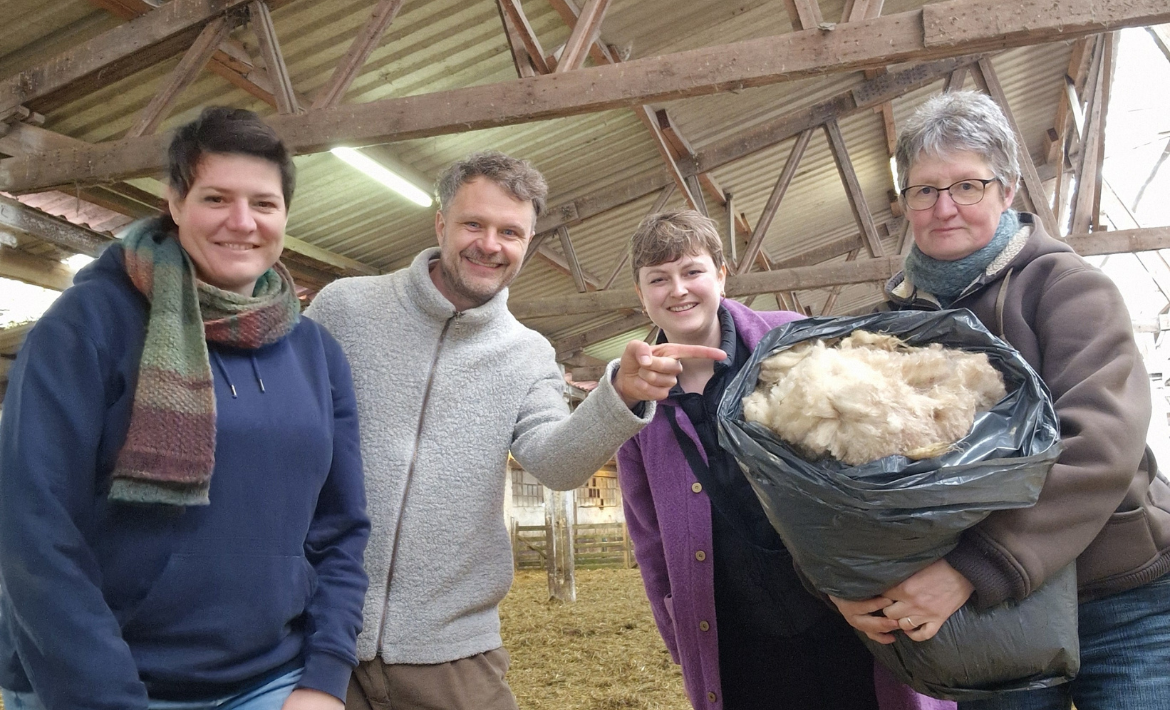
Just a few weeks ago, we were in Neuhaus, Lower Saxony, to experience the annual sheep shearing firsthand, and what can we say—it was a real highlight. It wasn't just the fact that the shearing only happens once a year, making it special in its own right, that made this trip so magical. The cooperation and expertise of everyone involved, and of course, our woolly (and then not so woolly) friends made our hearts soar. Let’s gather some facts about sheep shearing!

Sheep shearing is a crucial part of sheep farming, distinguished by its practical, economic, and historical significance. In Germany, as in many other parts of the world, sheep shearing traditionally occurs once a year, usually in spring around April. This practice is deeply rooted in agricultural tradition and plays a vital role in both animal welfare and the economics of sheep farming.
Historical Development
The history of sheep shearing in Germany stretches back many centuries. Sheep were primarily kept for their wool, a valuable commodity in textile manufacturing. During the Middle Ages, wool production was a central economic factor in many German regions. Monasteries and noble houses promoted sheep farming and the development of wool processing. With the industrialization in the 19th century, the mechanical processing of wool began, further influencing sheep farming.

Why is shearing done in April?
The timing of sheep shearing depends on several factors:
Weather conditions: In April, temperatures are usually mild enough to ensure that the sheep are not exposed to cold after shearing. At the same time, it is warm enough to minimize the risk of colds and other weather-related health problems.
Wool growth: Shearing in the spring occurs before the main growth phase of the sheep, which means that the animals do not have to suffer under the weight of their dense wool in the summer. This is particularly important for the well-being of the sheep, as a thick layer of wool can lead to overheating and other health problems.
Reproductive cycle: Shearing before the birthing season facilitates the birthing process and subsequent care of the lambs. Clean and well-maintained udders are easier for the lambs to access, improving the survival rate and health of the newborns.

Advantages & Challenges
Advantages:
+ Regular shearing helps prevent parasite infestation and skin diseases.
+ Scheduled shearing times promote consistent wool quality, which is important for the textile industry.
+ Removing the dense wool before the summer prevents overheating and stress in sheep.
Challenges:
+ Qualified shearers are often hard to find, especially in rural areas.
+ Returns from wool do not always cover the costs of shearing, which can lead to financial difficulties, particularly for smaller farms.

Sheep shearing remains a fascinating example of how traditional agricultural practices are adapted to modern requirements to align the well-being of sheep and the needs of people. In Germany, this tradition continues with a mix of time-honored techniques and new technologies, making sheep shearing a crucial aspect of agricultural annual cycles. For us, it's also essential.
